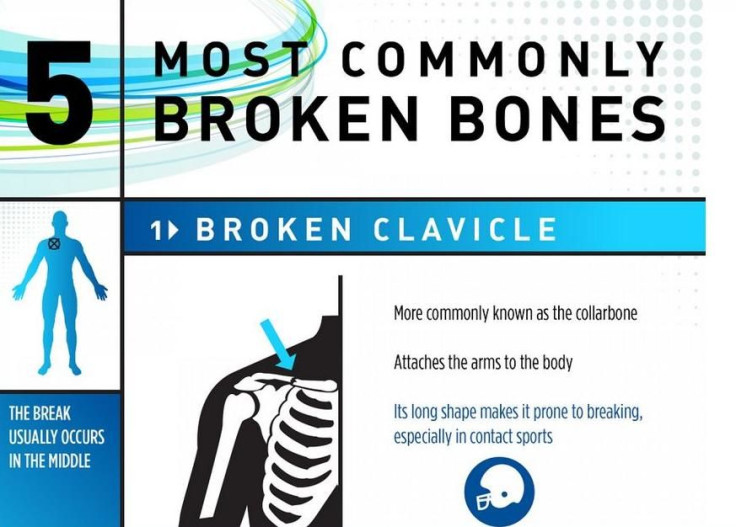Snap, Crackle, Pop: 5 Most Commonly Broken Bones In The Human Body

The human body's 206 bones are vulnerable to collisions, falls, trips, and slips. The snap, crackle, and pop sound you might hear from time to time from joints can either be the result of normal body movement, or accompanied by excruciating pain, signaling a bone fracture. With hundreds of bones to break, there's some cartilage more susceptible to injury than others, based on their location.
Broken bones are among the most common reasons people visit the emergency room (ER). The national average wait time patients spend in the ER before being seen by a doctor is 24 minutes, while the average wait time to receive pain medications for broken bones is 55 minutes, according to the nonprofit organization ProPublica.
Luckily, while patients wait to receive medical assistance, bones immediately begin depositing calcium at the site of the fracture. When the healing process ends, previously fractured bones become just as strong as they were before. Moreover, the site of the fracture is not more or less likely to break than any other area on the bone.
In adults, the arms accounts for 50 percent of bone fractures, according to the infographic, “5 Most Commonly Broken Bones,” by MK Orthopaedics Surgery & Rehabilitation. Typically, the arms break in the humerus of the upper arm, or in the radius of the ulna of the lower arm. This injury often occurs during bracing for a fall, impact, or other means.
Traveling down south from the arms to the toes and the feet, 25 percent of the bones in the human body are located in the feet. Forefoot injuries can be due to impact, or from stress fractures. Although patients may be able to walk, they should still receive medical treatment. A delay in treatment can lead to chronic pain and even arthritis.
Perhaps it may be best to rethink the unintentionally painful expression “break a leg.”
Learn more about which bones are more susceptible to breakage in the infographic below:




























